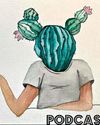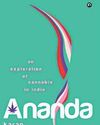Pollen is the number one enemy for folks with seasonal allergies, but these factors can make a bad day worse

Wearing shoes at home
In addition to tracking in dirt and mud, you can track in pollen through your shoes and even clothes, says Dr Achal Gulati, director principal and director professor of ENT, Dr Baba Saheb Ambedkar Medical College & Hospital, Delhi. The hidden pollen particles could get trapped— continuing to trigger symptoms. Using separate jackets and shoes for indoors and outdoors can be a partial deterrent, says Dr Isaac Mathai, medical director, SOUKYA, Bengaluru. Dr Mark Dykewicz, a professor in the allergy and immunology division at Saint Louis University School of Medicine, USA, recommends not only taking your shoes off when you get home, but also throwing them (and everything else you are wearing) for a wash. Use a vacuum cleaner regularly on surfaces and curtains to get rid of dust particles.
Exposure to smoking
Smoke can affect those susceptible to allergies in two ways. First, through first-hand and passive smoking: “The tobacco on the tip of a cigarette, when lit, has a temperature of 600– 800°C which releases more than 3,000 chemicals, about 50 known carcinogens and 400 other toxins like tar, hydrocarbons and ammonia,” says Gulati. He adds that these damage the mucous membrane of the oral and respiratory tract in the early phase and could lead to a malignant change in the oral cavity, voice box or the lungs. The fine cilia on the surface of the mucous membrane is also damaged, which, as a result, inhibits the clearance of the mucous. Therefore, the pollutants, toxins and pollen, he explains, do not get expelled, leading to infections, asthma or other harmful effects. The second is through environmental stressors like noxious gases, which contain carcinogenic hydrocarbons.
Your diet
Denne historien er fra March 2018-utgaven av Reader's Digest India.
Start din 7-dagers gratis prøveperiode på Magzter GOLD for å få tilgang til tusenvis av utvalgte premiumhistorier og 9000+ magasiner og aviser.
Allerede abonnent ? Logg på
Denne historien er fra March 2018-utgaven av Reader's Digest India.
Start din 7-dagers gratis prøveperiode på Magzter GOLD for å få tilgang til tusenvis av utvalgte premiumhistorier og 9000+ magasiner og aviser.
Allerede abonnent? Logg på

ME & MY SHELF
Siddharth Kapila is a lawyer turned writer whose writing has focussed on issues surrounding Hinduism. His debut book, Tripping Down the Ganga: A Son's Exploration of Faith (Speaking Tiger) traces his seven-year-long journey along India's holiest river and his explorations into the nature of faith among believers and skeptics alike.

EMBEDDED FROM NPR
For all its flaws and shortcomings, some of which have come under the spotlight in recent years, NPR makes some of the best hardcore journalistic podcasts ever.

ANURAG MINUS VERMA PODCAST
Interview podcasts live and die not just on the strengths of the interviewer but also the range of participating guests.

WE'RE NOT KIDDING WITH MEHDI & FRIENDS
Since his exit from MSNBC, star anchor and journalist Mehdi Hasan has gone on to found Zeteo, an all-new media startup focussing on both news and analysis.

Ananda: An Exploration of Cannabis in India by Karan Madhok (Aleph)
Karan Madhok's Ananda is a lively, three-dimensional exploration of India's past and present relationship with cannabis.

I'll Have it Here: Poems by Jeet Thayil, (Fourth Estate)
For over three decades now, Jeet Thayil has been one of India's pre-eminent Englishlanguage poets.

Orbital by Samantha Harvey (Penguin Random House India)
Samantha Harvey became the latest winner of the Booker Prize last month for Orbital, a short, sharp shock of a novel about a group of astronauts aboard the International Space Station for a long-term mission.

She Defied All the Odds
When doctors told the McCoombes that spina bifida would severely limit their daughter's life, they refused to listen. So did the little girl

DO YOU DARE?
Two Danish businesswomen want us to start eating insects. It's good for the environment, but can consumers get over the yuck factor?

Searching for Santa Claus
Santa lives at the North Pole, right? Don't say that to the people of Rovaniemi in northern Finland